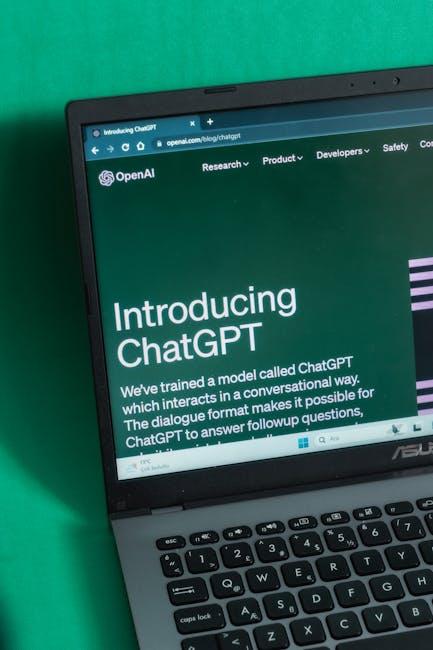



in the rapidly evolving landscape of artificial intelligence, the release of ChatGPT has transformed the way users interact with technology, crafting an experience that balances human-like conversation with machine learning prowess.However,as the demand for AI-driven tools continues to surge,the question arises: how will companies sustain and enhance these innovative platforms without pricing out the very users they seek to serve? Enter the emerging concept of “free-user monetization,” a strategy that promises to integrate advertisements into the ChatGPT experience. As we look ahead to 2026, this potential shift raises intriguing possibilities about the future of AI interactions. Will this new model be a boon for users seeking accessible tools, or will it complicate the seamless conversations we’ve come to enjoy? Join us as we explore the implications and potential outcomes of ChatGPT with ads in a world where monetization models are constantly evolving.
As conversations around the future of AI evolve, the potential implementation of monetization strategies for free users raises vital questions about accessibility. Free-user monetization can present notable benefits and drawbacks for a wider audience. On one hand, it enables organizations to sustain themselves financially while offering valuable services without direct charges. these platforms can diversify their revenue streams and continue to improve their AI technologies. However, introducing ads may also create an uneven playing field where users with premium access have a richer, uninterrupted experience, while free users navigate a fragmented landscape cluttered with advertisements.This tension between monetization and accessibility deserves thorough scrutiny.
The implications extend beyond user experience to the core mission of AI development itself. As companies prioritize profitability, vital innovations might shift focus towards ad-driven algorithms, potentially compromising the quality, creativity, and neutrality of AI interactions. The risk is that incentives may skew the information users receive and the functionality of the platforms. To understand these shifts, it is essential to consider the following dimensions:
| aspect | Free users | Paid Users |
|---|---|---|
| Experience | Ad-supported, limited | Ad-free, enhanced |
| data Privacy | Lower safeguards | Higher safeguards |
| Access to Updates | Delayed or restricted | Immediate and full access |

As the landscape of digital interaction evolves,the introduction of an advertising model within ChatGPT presents both opportunities and obstacles for its users.The prospect of accessing premium features at no cost may attract a larger user base,potentially democratizing access to advanced AI capabilities. Users may benefit from an enhanced experience, including tailored suggestions and quicker responses, funded through ad revenues, which allows OpenAI to sustain and innovate its offerings. This shift could lead to a more integrated AI experience where users are engaged with content that resonates with their interests.
However, the implementation of ads within ChatGPT is not without challenges. Users might encounter increased distraction,which could interrupt their workflow or diminish the quality of interaction with the AI. Additionally, privacy concerns may arise regarding how user data is leveraged for targeted advertising. Striking a balance between user experience and successful monetization will be crucial. Key considerations include:

As we move toward a future where user experiences need to be more engaging and integrated, adopting a user-centric approach is paramount. Companies should prioritize the following strategies to ensure seamless experiences:
Moreover, embracing agile methodologies in design and development processes can substantially streamline integration efforts. Consider establishing dedicated cross-functional teams focused on:

As artificial intelligence becomes a more integral part of everyday life, the ethical implications of monetizing these technologies cannot be overlooked. Users, who often lack insight into how their data is being utilized, face a potential erosion of trust in AI platforms that choose to implement advertising within their models. In this evolving landscape, it’s essential for companies to establish transparent practices that prioritize user privacy and consent, ensuring that individuals feel safe and informed about their engagement with monetized AI services. Key considerations include:
The duty to maintain user trust extends to not only safeguarding data but also ensuring that the monetized content users encounter aligns with their interests and needs. This can be achieved through effective content curation that respects user preferences while aligning with ethical advertising standards. Developers must balance revenue generation with the potential risks of alienating their user base. Companies may also consider implementing robust feedback channels,allowing users to voice concerns over ad experiences. A complete strategy may include:
| Strategy | Description |
|---|---|
| Feedback Loop | A system where users can share their ad experience and preferences. |
| Regular Audits | Conducting routine assessments of ad practices to ensure compliance with ethical standards. |
| User Education | Providing resources that inform users about the monetization process and their rights. |
As we navigate the evolving landscape of artificial intelligence and user interaction, the potential introduction of ads within ChatGPT in 2026 prompts a myriad of questions about the balance between monetization and user experience. While the idea of “free-user monetization” may offer financial sustainability for platforms that seek to enhance their offerings, it also raises concerns about how such changes might affect the accessibility and integrity of AI conversations.
as technological advancements continue to reshape our engagement with digital tools, it is essential for users, developers, and policymakers alike to remain vigilant. Open dialog about the implications of advertising in AI-driven platforms will be crucial in ensuring that innovation does not come at the cost of the user experience.
the future remains unwritten, and as we look ahead to 2026 and beyond, one thing is clear: the conversation about ChatGPT with ads is just beginning. Stay tuned as we explore the unfolding narrative of technology, monetization, and what it means for users around the globe.